Handling refunds at scale isn’t just a back-office task — for high-volume retailers, it can make or break the customer experience.
In a world where return rates can reach up to 30% in ecommerce, having a clear, fast, and automated refund management system is no longer optional. It’s essential.
Customers expect quick resolutions, real-time updates, and hassle-free return journeys. Meanwhile, operations teams need ways to reduce manual work, prevent fraud, and keep costs under control.
This is where modern refund management platforms come in. Built specifically for growing or high-volume retailers, these tools integrate directly with ecommerce platforms, CRMs, and payment systems to:
- Automate return approvals and refunds
- Offer exchange or store credit options to retain revenue
- Provide real-time visibility into return trends and refund flows
In this guide, we’ll explore 5 top refund management platforms that are helping UK and global retailers scale their post-purchase operations, boost customer satisfaction, and improve profitability.
–
1. ReturnLogic
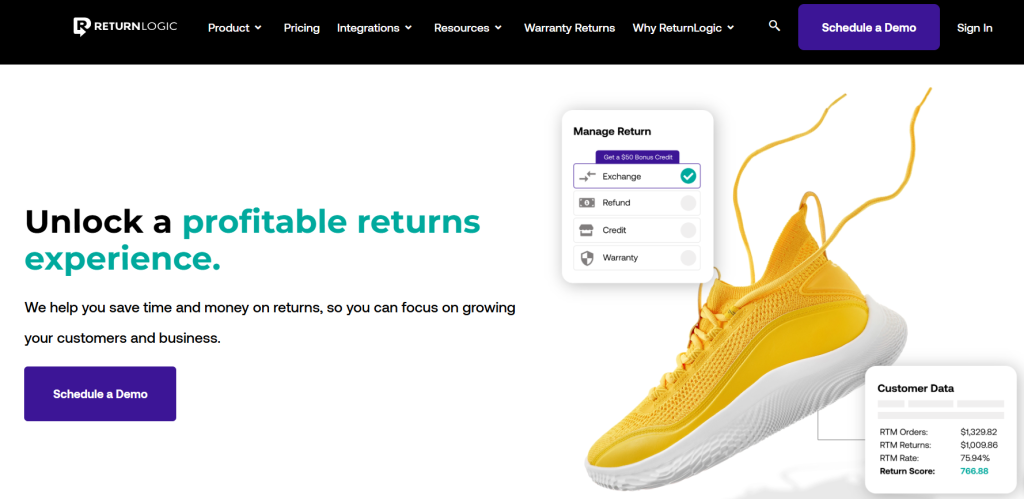
Managing returns at scale can quickly become complex, especially for retailers juggling high volumes of daily orders. ReturnLogic is one of the platforms designed to simplify that process, offering structured tools to help retailers automate and manage refunds, exchanges, and return-related workflows.
Key Features
- Returns Automation: Helps reduce manual processing by automating return approvals and notifications.
- Customer Self-Service Portal: Shoppers can initiate returns through a branded portal, reducing support load.
- Warranty and Exchange Support: Enables exchanges and warranty workflows alongside traditional refunds.
- Analytics Dashboard: Offers insights into common return reasons and product-level performance.
- Ecommerce Integrations: Compatible with platforms like Shopify and BigCommerce.
Considerations for High-Volume Retailers
ReturnLogic is used by ecommerce businesses looking to improve return handling without overloading internal teams. By introducing automation and structured data, it can help retailers:
- Free up operational time spent on manual approvals
- Understand return trends to improve future merchandising decisions
- Provide a more consistent customer return experience
It’s worth evaluating for retailers prioritising returns visibility and process efficiency across their post-purchase operations.
📚 best payment initiation APIs
2. Loop Returns
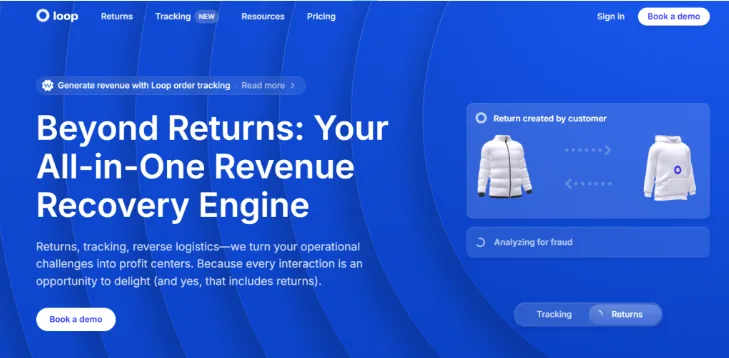
Loop Returns is a returns management platform designed to assist ecommerce brands in automating and optimizing their post-purchase processes. It offers tools aimed at improving customer retention and operational efficiency.
Key Features
- Automated Returns and Exchanges: Loop provides a self-service portal that allows customers to initiate returns or exchanges, aiming to reduce manual intervention and streamline the process.
- Customizable Workflows: The platform enables retailers to define return policies and automate decisions based on specific conditions, such as product type or customer segment.
- Fraud Prevention Tools: Loop includes features to help identify and mitigate potential return fraud through customizable rules and monitoring.
- Analytics and Insights: Retailers can access data on return reasons, customer behavior, and operational metrics to inform business decisions.
- Integration Capabilities: Loop integrates with various ecommerce platforms and tools, including Shopify, to facilitate seamless operations.
Considerations for High-Volume Retailers
For retailers handling a significant volume of orders, Loop’s automation features can assist in managing returns more efficiently. The platform’s ability to customize workflows and policies allows businesses to tailor the returns process to their specific needs. Additionally, the analytics provided can offer insights into return patterns, potentially informing inventory and customer service strategies.
While Loop offers various tools to enhance the returns process, retailers should assess how its features align with their operational requirements and customer service goals.
📚 payment methods for retail businesses
3. ReturnGO
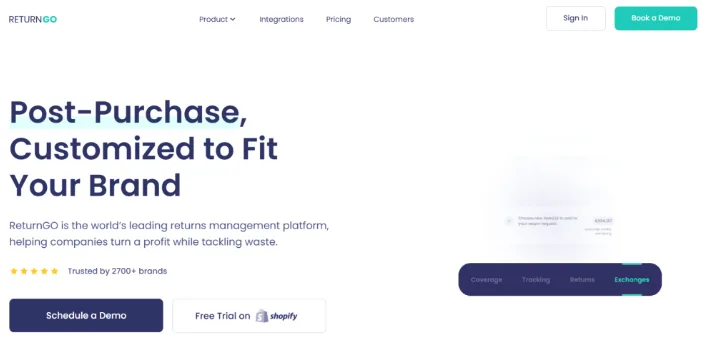
ReturnGO is a returns and refund automation platform aimed at ecommerce retailers looking to improve their post-purchase operations. It focuses on creating self-service experiences for customers while giving businesses greater control over return logic and workflows.
Key Features
- Self-Service Returns Portal
Allows customers to initiate returns, exchanges, or refunds on their own, reducing pressure on support teams. - Smart Rules Engine
Retailers can customise return policies based on product types, order value, return reasons, or other conditions. - Automated Refunds and Exchanges
Supports automated workflows to handle returns, restock updates, and refunds, helping speed up operations. - Custom Return Reasons and Workflows
Helps businesses collect structured feedback while guiding users through return options that retain revenue (e.g., exchanges or store credit). - Platform Integrations
Works with major ecommerce systems like Shopify, WooCommerce, and BigCommerce.
Considerations for High-Volume Retailers
ReturnGO is especially useful for businesses that need flexible return logic and want to reduce manual handling. By automating decisions and offering a branded return experience, it can:
- Reduce return-related customer service volume
- Help retain revenue through intelligent exchange flows
- Collect useful product-level feedback that informs merchandising
It’s particularly well-suited for teams that want to go beyond basic refunds and create more tailored, rules-based return experiences.
4. ZigZag Global
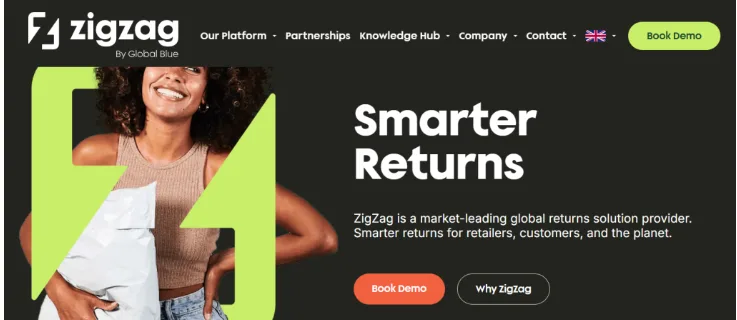
ZigZag Global is a returns management platform designed to support retailers with both domestic and international return logistics. Its focus lies in connecting global carriers, warehouses, and marketplaces to simplify the return experience for customers while offering greater control and visibility to merchants.
Key Features
- Customisable Returns Portal
Retailers can offer branded, localised return portals tailored to customer preferences across different countries. - Carrier and Warehouse Network
ZigZag connects retailers to a global logistics network, helping reduce return costs and delivery times. - Return Method Flexibility
Customers can choose how they want to return items—drop-off, pick-up, in-store—based on retailer settings and geography. - Analytics Dashboard
Provides actionable insights on return rates, customer behaviour, and refund trends to guide future decisions. - Multi-Platform Integration
Supports integration with ecommerce platforms, ERPs, and warehouse systems to enable smooth return operations.
Considerations for High-Volume Retailers
ZigZag Global is particularly suited for large or cross-border retailers. It helps simplify complex return flows by:
- Offering regional return hubs to reduce international shipping costs
- Giving customers convenient return options in their own language and currency
- Helping internal teams monitor return performance across geographies
For retailers scaling across Europe or globally, ZigZag provides the infrastructure to make the return experience more local and efficient.
5. Optoro
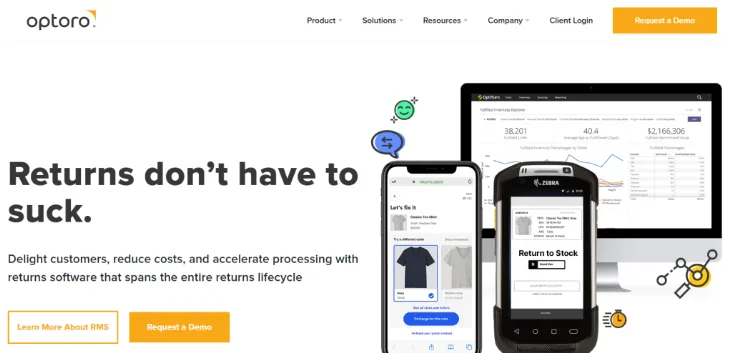
Optoro focuses on reverse logistics — helping retailers manage returned, excess, and unsold inventory more efficiently. Unlike traditional refund tools, Optoro offers a suite of software and logistics services that determine the most profitable and sustainable path for returned goods, whether that’s resale, recycling, or donation.
Key Features
- Returns Routing Engine
Uses real-time data and rules to determine the best disposition path for each returned item — resale, return to vendor, liquidation, etc. - Resale Marketplace Integration
Returned products can be automatically listed for resale on secondary marketplaces, recovering value that would otherwise be lost. - Sustainability-Focused Reporting
Tracks environmental impact by measuring landfill diversion and carbon savings from smarter return handling. - Warehouse Management Tools
Offers scanning, sorting, and restocking tools for retailers who process returns in-house or via third-party logistics providers. - Analytics & Recovery Optimization
Dashboards provide data on return trends, recovery rates, and operational performance to guide inventory and pricing strategies.
Considerations for High-Volume Retailers
Optoro is a strong fit for large retailers or marketplaces handling substantial return volumes and looking to:
- Maximise recovery value from returned inventory
- Reduce environmental waste tied to unsold goods
- Streamline warehouse operations tied to reverse logistics
It’s particularly relevant for omnichannel businesses where returned inventory management is critical to profit margins and sustainability targets.
How Finexer Can Make Refund Management Affordable with Open Banking
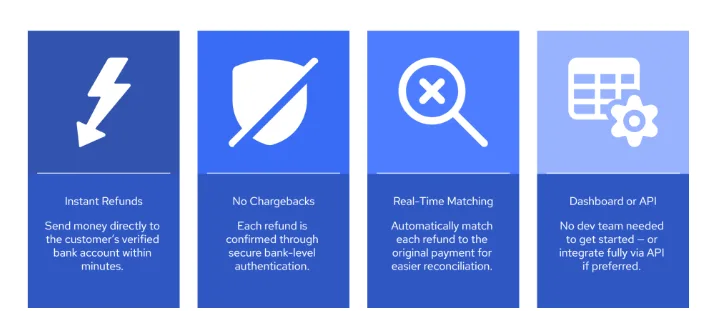
For many retailers, especially those operating at scale, managing refunds isn’t just about issuing payments — it’s about doing it fast, securely, and without spiralling costs.
That’s where Finexer comes in.
Built as a UK-first Open Banking platform, Finexer offers the infrastructure to automate and simplify refunds using direct account-to-account (A2A) payments. This means you can move money instantly between your business and your customers, without relying on card networks, middlemen, or expensive payment gateways.
Why Refunds via Open Banking Make Sense
Traditional card-based refunds often:
- Take days to reach the customer
- Incur high processing fees (especially on high volumes)
- Require intermediary systems for settlement and reconciliation
With Open Banking, Finexer enables you to:
- Trigger refunds instantly back to the customer’s verified bank account
- Avoid interchange or chargeback fees
- Reduce fraud risks by confirming refund recipients through secure bank-level authentication
- Match refunds to transactions in real time, making reconciliation significantly easier
Flexible and Scalable for High-Volume Retailers
Whether you’re processing 200 refunds a week or 20,000:
- Finexer doesn’t require monthly minimums or rigid contracts
- You can start processing refunds through the Finexer dashboard — no dev team required
- Or, for integrated platforms, Finexer’s APIs allow you to embed real-time refunds directly into your returns workflows
Built-In Benefits for Retail Teams
- Reduce Operational Costs: Usage-based pricing means you only pay for what you use — with no hidden fees
- Improve Speed & Customer Trust: Refunds land in customer accounts in minutes, not days
- Simplify Reconciliation: Match each refund to the original transaction with full visibility across your finance stack
- Stay Compliant: Finexer’s FCA-regulated framework ensures every payment meets UK security and data standards
For high-volume retailers that want to modernise their refund management and reduce costs, without sacrificing control, Finexer offers a fast, secure, and flexible way to do just that.
Get Started
Start your 14-day free trial today and see why businesses trust Finexer for secure, compliant, and tailored open banking solutions.
Wrapping Up:
Returns are no longer just a back-office task — they’re a key part of the customer journey. For high-volume retailers, managing refunds efficiently can lead to better margins, reduced operational stress, and improved customer loyalty.
Each platform featured in this guide brings something different to the table:
- ReturnLogic focuses on structured returns automation and exchange workflows.
- Loop Returns puts customer experience and retention at the core of post-purchase.
- ReturnGO offers customisable logic for merchants who want more control over refund rules.
- ZigZag Global is ideal for cross-border retailers needing flexible, international logistics.
- Optoro optimises the lifecycle of returned products with a focus on recovery value and sustainability.
Choosing the right refund management platform depends on your operational setup, return volume, geographic scope, and long-term goals. Whether you’re aiming to reduce costs, improve efficiency, or turn returns into retention opportunities, investing in the right system will pay dividends.
What is a refund management platform?
A refund management platform helps automate and streamline returns, exchanges, and refunds for ecommerce or retail businesses.
Why is refund management important for high-volume retailers?
Efficient refund systems reduce support costs, prevent fraud, improve customer satisfaction, and speed up return resolution.
How does automation improve refund processing?
Automation reduces manual steps, improves accuracy, and allows refunds or exchanges to be processed faster and with less staff involvement.
Can Open Banking be used for issuing refunds?
Yes. Open Banking allows secure, direct account-to-account refunds—faster, cheaper, and safer than card-based refund methods.
How does Finexer help with refund management?
Finexer enables instant, low-cost A2A refunds via Open Banking, reducing payment fees and helping retailers reconcile transactions easily.

Process Refunds with no extra cost, Switch to Finexer! Schedule your free demo and get a 14-day Trial by Finexer 🙂
![Top 5 Refund Management Platforms Built for High-Volume Retailers 1 Top 5 Refund Management Platforms for Retailers [2025]](/wp-content/uploads/2025/04/Refund-management-jpg.webp)